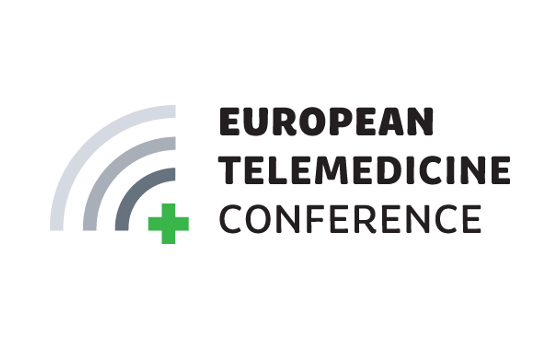 27 - 29 May 2018, Sitges, Barcelona, Spain.
27 - 29 May 2018, Sitges, Barcelona, Spain.The European Telemedicine Conference 2018 (ETC18) is an interdisciplinary forum for healthcare professionals, directors, managers, and researchers with the intent of bringing together governmental leaders, healthcare delivery organizations, and academic research initiatives. ETC18 highlights research and operational evidence from innovative healthcare solutions. As such the goal is to address challenges and findings from new product development, effect oriented studies, and operational experiences.
An international program committee will judge the abstracts submitted. The authors of the fourth best abstracts will be invited to an oral speech with the aim to include researchers' perspective in the discussion with innovators and implementers. The remaining accepted abstracts will be presented as posters at the conference.
Areas of general interest to ETC18 include studies and other activities related to development, assessment and implementation of telemedicine and digital health in general. More specialised topics within ETC18 include, but are not limited to:
- Participatory design
- Implementation studies
- Effectiveness assessment
- Economic evaluation of telemedicine
- Clinical telemedicine practice
- Medical connectivity
- Enabling technologies
- Health policy and regulation
- Monitoring
- Health informatics
- Clinical decision support systems
- Knowledge management
- Evidence-based practice
- Assistive technology
- Design and development of methodologies for healthcare IT
Information regarding submission
- The submission has to be done via Easychair system here by the 22nd April 2018.
- Formatting guidelines and requirements must be adhered to the instructions provided below.
- At least one author of an accepted abstract is expected to attend ETC18 to present their work.
Program chairs
- Professor Kristian Kidholm, Centre for Innovative Medical Technology, Odense University Hospital
- Professor Francisco Lupiáñez-Villanueva, Open University of Catalonia
Program committee
- Diego D'Ambrosio, IT System Analyst, University of Pittsburgh Medical Center (UPMC), International Services
- Monika Johansen, Acting Head of the "Health Record of the Future" department at the Norwegian Centre for E-health Research
- Margaret Whoriskey, Head of Technology Enabled Care and Digital Healthcare Innovation, Scottish Government
ETC18 Format for Conference Abstracts
Conference abstracts should be structured in the following way:- Title of the paper
- Name(s) in bold, affiliation(s) and address(es), city and country
- Correspondence to: name and address (preferably only one address of correspondence), e-mail address
- Abstract: the content of the abstract has to be preferably structured as follows: introduction (comprising background and problem statement), theory and methods, results, conclusions and discussion, references (if any). Nevertheless, these headings are of course provided as a guidance and authors can deviate if they wish. The abstract is expected to reflect the content of the paper and should be understandable to readers who have not read the rest of the paper. It should not contain any citations of other published work.
- Keywords: the abstract should contain 3-6 keywords, divided by comma's, which encapsulate the principal subjects covered by your paper.
General requirements:
- Abstracts should be written in correct English and include figures and tables where appropriate.
- Abstracts should be submitted via the EasyChair link provided above and also uploaded in pdf format. Abstracts should be typed with single space and minimum margins of 2 cm both sides, font size 11, well readable character (preferably Times New Roman), maximum line spacing 1,5.
- If any abbreviations is to be used, the corresponding words must be spelt out in full the first time they appear in the text followed by the abbreviation in brackets.
- The abstract's length should not exceed 1 page including all the required items listed above.
- Literature references (if there are any) should be cited at the appropriate places in the text, with numbers in square brackets (for example: [1], [2] etc.). All references cited in the text should be listed at the end of the document in the same order they appear in the text.
For further information, please contact Valentina Tageo, Badalona Serveis Assistencials, This email address is being protected from spambots. You need JavaScript enabled to view it.
About the European Telemedicine Conference
Back for its 5th edition, the European Telemedicine Conference (ETC) 2018 is hosted as part of the HIMSS Europe & Health 2.0 Conference on 27-29 May in Sitges, Barcelona. The programme will address:- outstanding telemedicine implementations across Europe
- challenges and best practices in scaling up telemedicine implementations
- best practices in training and engaging patients, clinicians and care communities
- evaluation frameworks and the medical, social and economic aspects of technology assessment
- The Young Innovators Competition
See the full programme here.